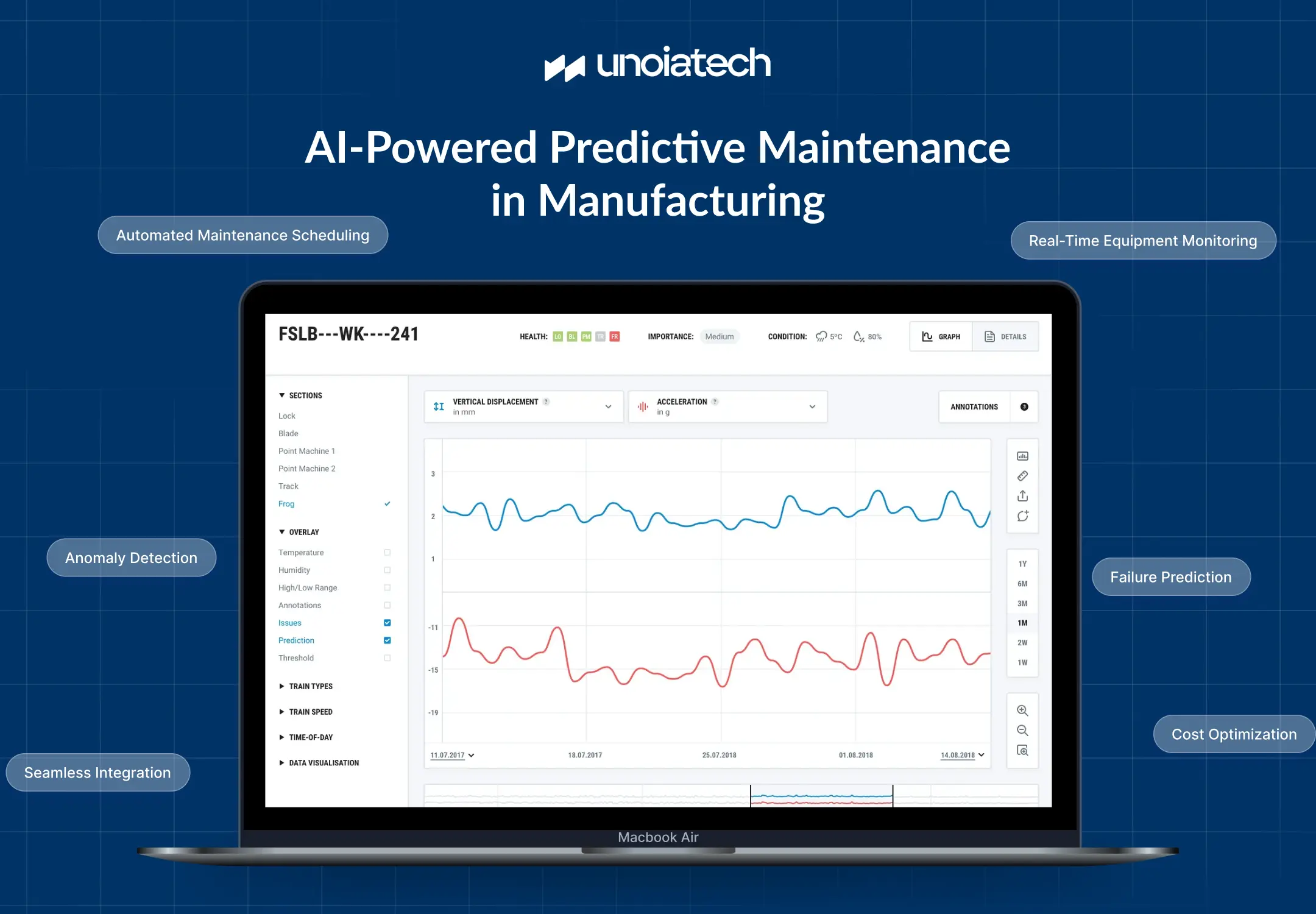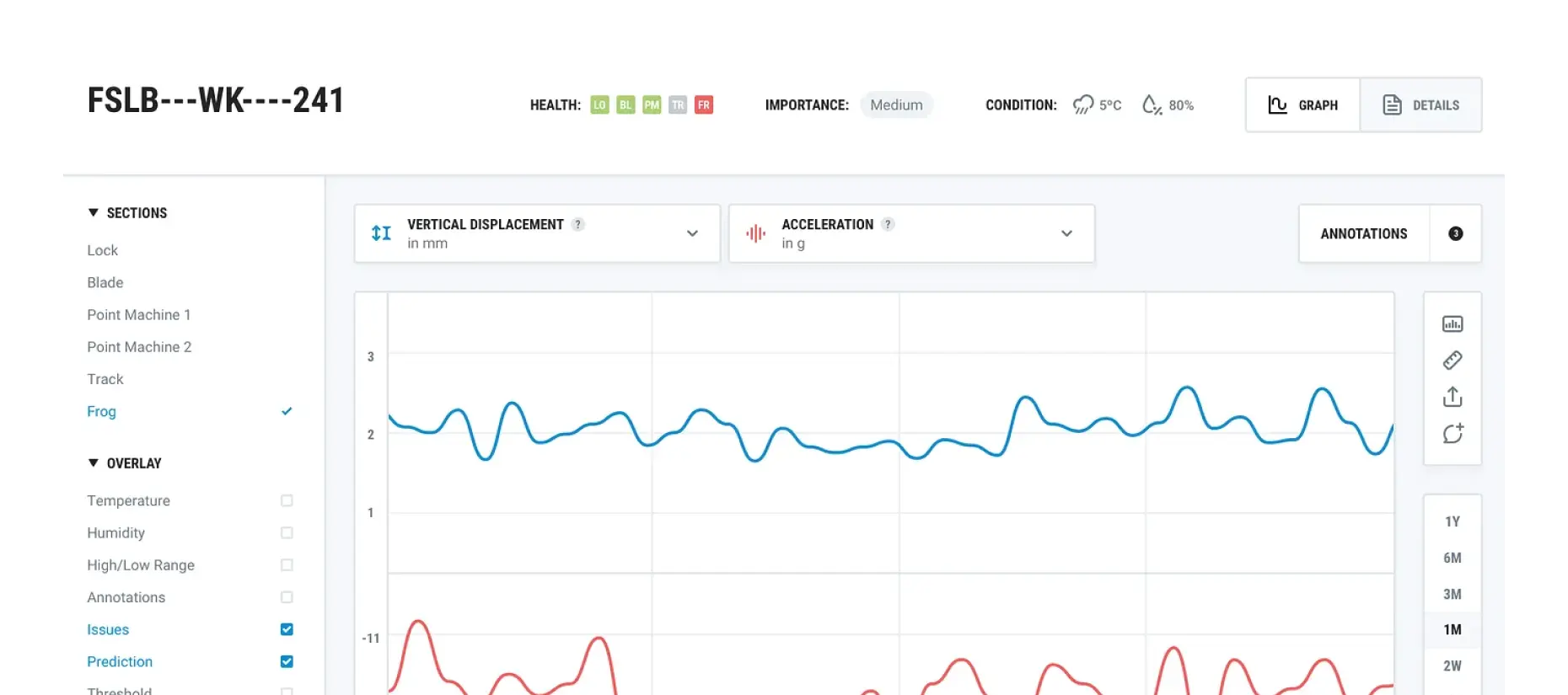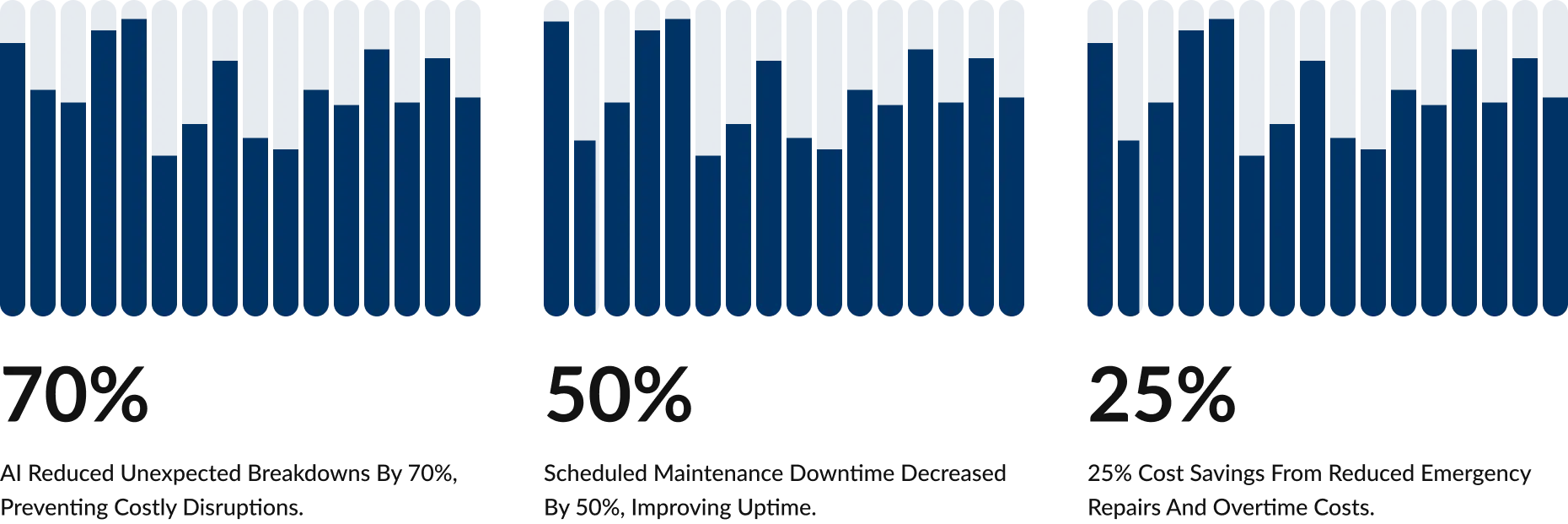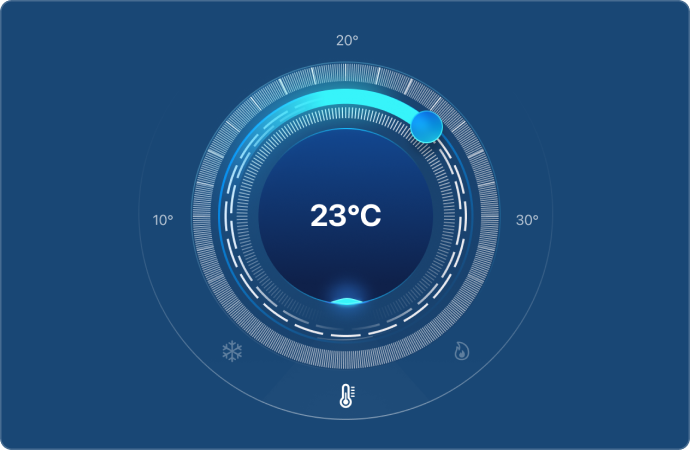AI Powered Predictive Maintenance in Manufacturing

Client
Large-Scale Manufacturing Company
Features
- AI-Powered Predictive Maintenance
Stats
- 70% fewer breakdowns
- 25% cost savings
- 50% less downtime
Overview
To improve operational efficiency, reduce downtime, and extend equipment lifespan, we developed an AI-powered Predictive Maintenance Agent for a manufacturing company. This AI-driven system automates equipment monitoring, fault prediction, and maintenance scheduling, significantly reducing unexpected failures while optimizing maintenance costs. The AI Agents dynamically analyze real-time sensor data to predict breakdowns before they happen.
Who is the Client?
Our client is a large-scale manufacturing company that operates multiple production facilities with heavy machinery. Their existing maintenance process was reactive and inefficient, leading to unexpected breakdowns, costly repairs, and production delays.
What was the Problem?
The company’s manual maintenance process faced several inefficiencies and business risks:
1. Unexpected Equipment Failures
- Machines broke down without warning, causing production halts and missed deadlines.
- Repairs were costly, and replacement parts often took weeks to arrive.
2. Inefficient Maintenance Scheduling
- Maintenance was performed on fixed schedules instead of actual machine conditions.
- Unnecessary servicing increased costs, while some critical failures were still missed.
3. High Downtime & Lost Productivity
- Each breakdown led to hours or even days of downtime, reducing production capacity.
- Operators had no way to detect early signs of failure before major issues occurred.
4. Lack of Real-Time Monitoring & Predictive Insights
- Maintenance teams reacted to breakdowns instead of preventing them proactively.
- No centralized data to track machine health or predict failures.
5. High Operational & Maintenance Costs
- Frequent breakdowns led to higher repair costs and expensive emergency fixes.
- Increased wear and tear shortened machine lifespan, requiring costly replacements.

What was the Solution?
To address these inefficiencies, we developed and deployed an AI-powered Predictive Maintenance Agent, fully automating fault detection, maintenance scheduling, and performance optimization.
The AI-Powered Solution Included:
1. Real-Time Equipment Monitoring – AI collects and analyzes:
- Sensor data from industrial IoT devices (vibration, temperature, pressure, etc.).
- Machine operational logs & historical performance records.
- Production workflow data to detect anomalies in efficiency.

2. AI-Powered Failure Prediction & Anomaly Detection – AI detects:
- Early warning signs of equipment wear and tear.
- Abnormal fluctuations in temperature, pressure, or vibration.
- Patterns indicating potential breakdowns before they occur.

3. Automated Maintenance Scheduling – AI:
- Predicts the optimal time for servicing to avoid failures.
- Automatically assigns tasks to maintenance teams.
- Ensures just-in-time maintenance, reducing unnecessary servicing costs.

4. Cost Optimization & Spare Parts Planning – AI:
- Predicts when parts will need replacement, reducing emergency orders.
- Optimizes inventory for spare parts, avoiding shortages or excess stock.
5. Seamless Integration with Manufacturing & ERP Systems – AI connects with:
- Industrial IoT platforms for real-time data collection.
- ERP systems (SAP, Oracle, Microsoft Dynamics) for maintenance tracking.
- CMMS (Computerized Maintenance Management System) for scheduling automation.


The Process Followed
Step 1: Requirement Gathering & Machine Data Analysis
- Conducted a deep analysis of the company’s production lines and equipment.
- Identified key failure patterns and operational inefficiencies.
- Defined AI-driven predictive modeling checkpoints.
Step 2: AI Model Training & Development
- Trained machine learning models using historical breakdown data.
- Developed real-time anomaly detection models for IoT sensor data.
- Created AI-powered failure probability scoring for each machine.
Step 3: AI Agent Development & API Integration
- Built an AI-powered maintenance bot that integrates with:🔹 Industrial IoT devices and PLCs for real-time data collection.🔹 ERP & maintenance systems for automatic work order creation.
🔹 Dashboard for live monitoring & alerts on machine health.
- Implemented real-time fault detection and predictive alerts.
Step 4: Deployment & Maintenance Automation
- Deployed AI-powered predictive maintenance bots that:
✅ Continuously analyze equipment health.
✅ Trigger proactive maintenance notifications before failures occur.
✅ Automatically adjust maintenance schedules based on real-time risk levels.
Step 5: Performance Tracking & AI-Powered Maintenance Dashboard
- Built an AI-powered analytics dashboard to provide:
🔹 Live monitoring of equipment health & predictive failure alerts.
🔹 Maintenance schedule optimization & cost-saving insights.
🔹 Historical performance trends for long-term machine health tracking. - Enabled manual overrides for maintenance teams in urgent situations.

Testimonial

“The AI-powered predictive maintenance system has revolutionized our manufacturing operations. We now detect potential failures weeks in advance, eliminating costly downtime and improving production efficiency. Maintenance planning is now smarter and more cost-effective!”
Operations Manager
Manufacturing Company
Business Impact & Results
1. Reduced Machine Downtime & Increased Productivity
- AI reduced unexpected breakdowns by 70%, preventing costly disruptions.
- Scheduled maintenance downtime decreased by 50%, improving uptime.
- Production efficiency improved, as machines operated at optimal performance.
2. Optimized Maintenance Costs & Spare Parts Planning
- 25% cost savings from reduced emergency repairs and overtime costs.
- AI-driven inventory management reduced spare part shortages and excess stock.
- Just-in-time maintenance increased machine lifespan, delaying costly replacements.
3. Faster Issue Detection & Preventative Action
- AI detected failures 3-4 weeks in advance, allowing proactive repairs.
- Maintenance teams focused on critical repairs, instead of routine checkups.
- Predictive analytics enabled better long-term capital planning.
4. Scalability & Future-Proofing Operations
- AI handled real-time analysis of thousands of sensors across multiple facilities.
- The company expanded production without increasing maintenance workload.
- The system continuously learned from new failures, improving prediction accuracy over time.

Conclusion
The AI-powered Predictive Maintenance Agent is a game-changer for the manufacturing industry. By automating real-time fault detection, optimizing maintenance schedules, and preventing machine failures, the company has reduced downtime, increased efficiency, and optimized operational costs.
This case study serves as a blueprint for manufacturers looking to integrate AI-driven predictive maintenance into their operations.
Call to Action

Grab the Opportunity,
Get Technical Advantage,
Build the Next Unicorn.
Unoiatech gives you the power to ideate, build and launch your Software Business so you can grab stake in the Emerging Tech Market.






